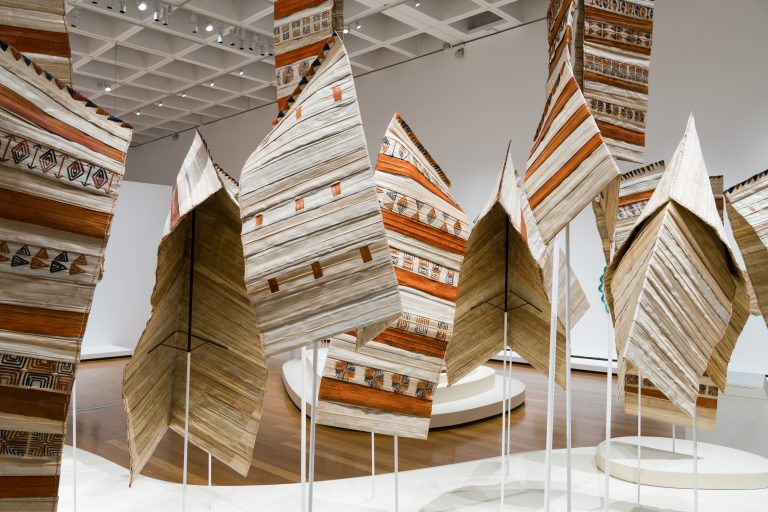We acknowledge the Traditional Owners of the land on which the Queensland Art Gallery | Gallery of Modern Art stands and recognise the creative contribution First Australians make to the art and culture of this country.

Nakas Clan / Hakö language group / Autonomous Region of Bougainville / Kiria Asike b.1959 / Maria Lingi Hugese b.1951 / Therese Pitapita Harohi b.1958 / Rachael Hapious Hakot b.1963 / Elizabeth Ngosi Lambert b.1956 / Lydian Tarine Havini b.1994 / Judith Pena b.1968 / Sinsu (installation view) 2018 / Pandanus, natural dyes (noni root), wild banana leaf / Purchased 2018. Queensland Art Gallery | Gallery of Modern Art Foundation / Collection: Queensland Art Gallery / © Nakas Clan / Photograph: Natasha Harth, QAGOMA
Nakas ClanSinsu 2018
Not Currently on Display
These unique sculptural forms are worn as protective coverings in public ceremonies relating to death, matrimony and the investiture of clan chiefs. The most ornately decorated hoods, known as A’Poa can only be worn by the clan’s Queen or chiefs; however, unmarked Tulbus are worn by all women during grieving ceremonies, and by clan women without this status during life-affirming ceremonies (coming of age and marriage). Tulbus further fulfil multiple functions within and outside ceremony, and are used as mats, food coverings, and as shelter from the rain and sun.
The patterns used to decorate the Sinsu worn by clan chiefs differ according to which of the four Buka and North Bougainville clans the chief belongs: Nakaripa, Naboin, Nakas or Natasi. For example, capes known as Kakoto feature small rectangles of colour woven into a number of the strips of white pandanus used to construct the cape. Alternatively, chiefs from the Naboin and Nakas clans wear capes decorated with red squares, while those marked with red and black are reserved for chiefs of the Nakaripa clan. A’Poa – those worn by the three highest ranking chiefs – are decorated with the designs from all four clans.